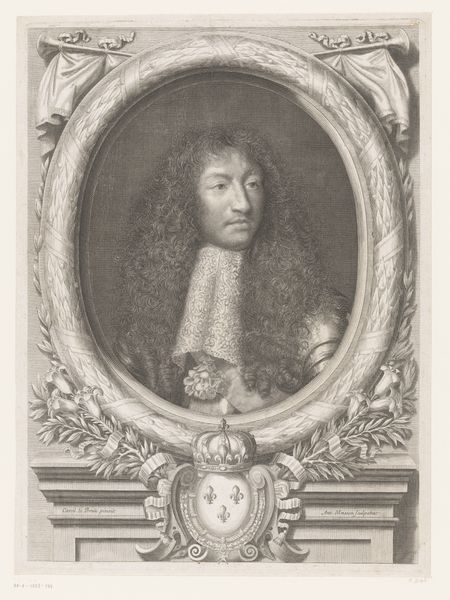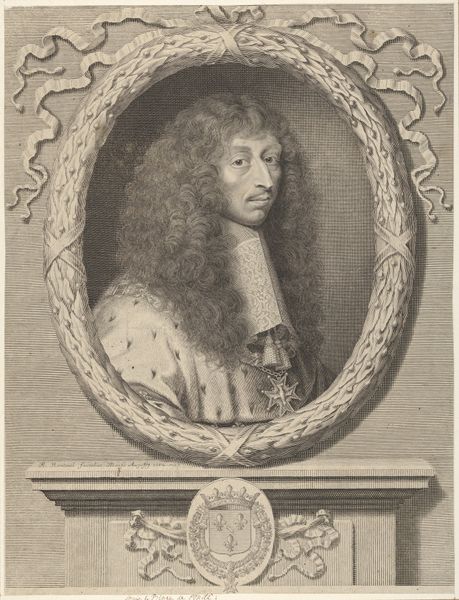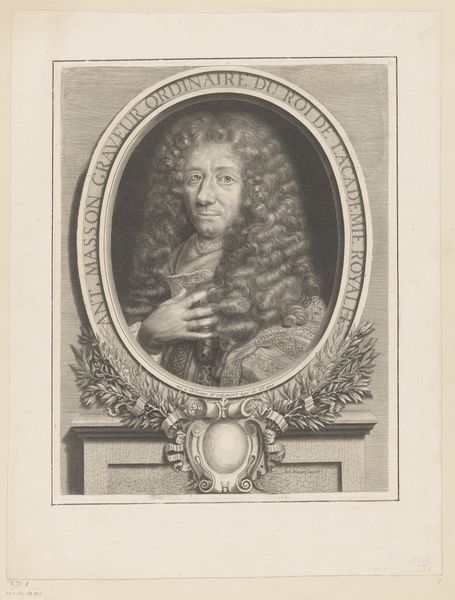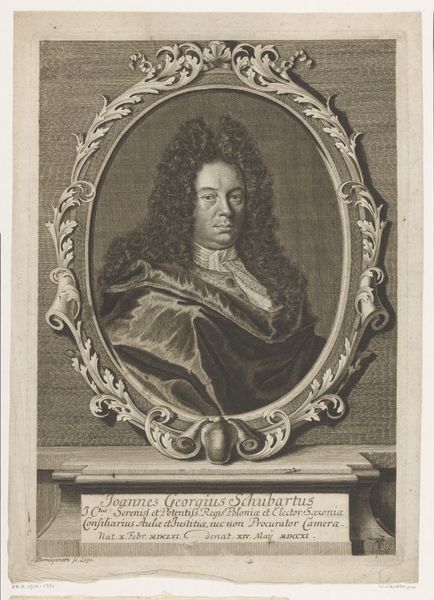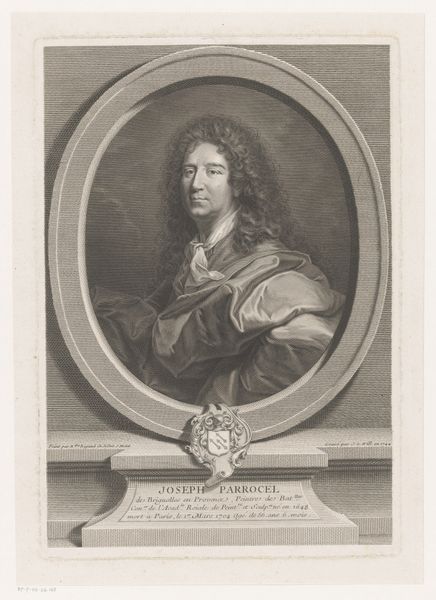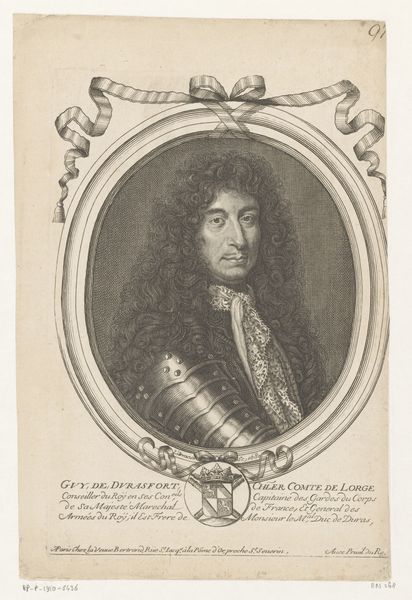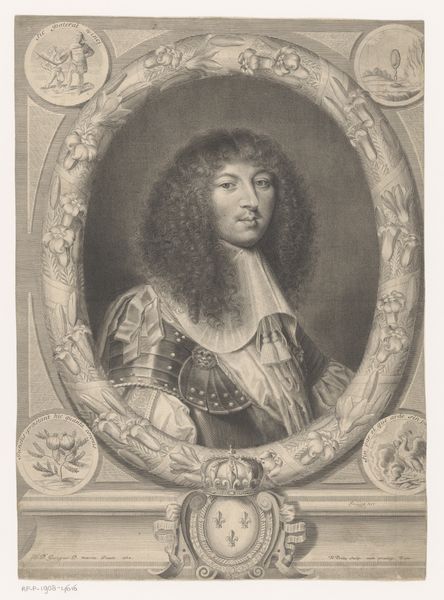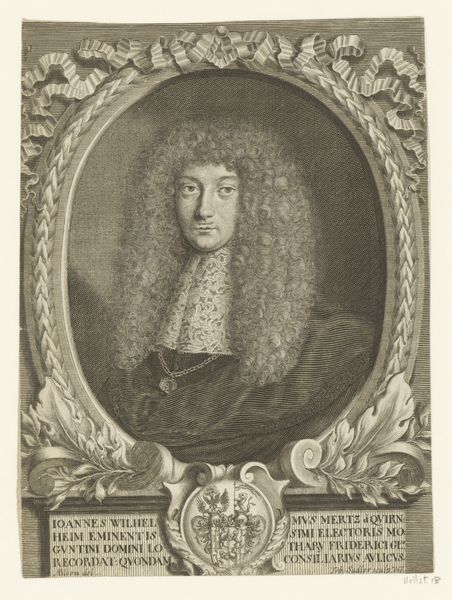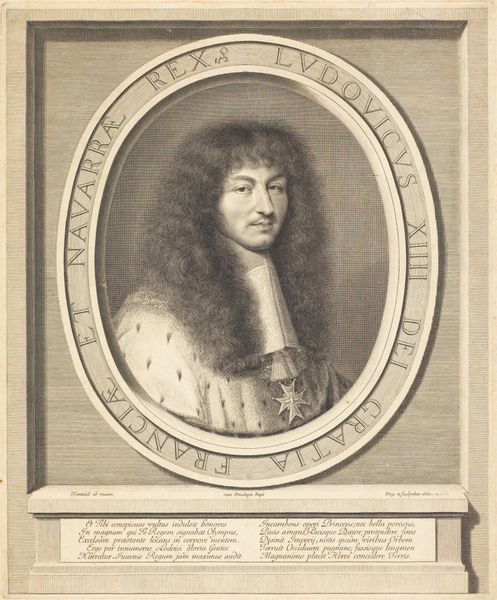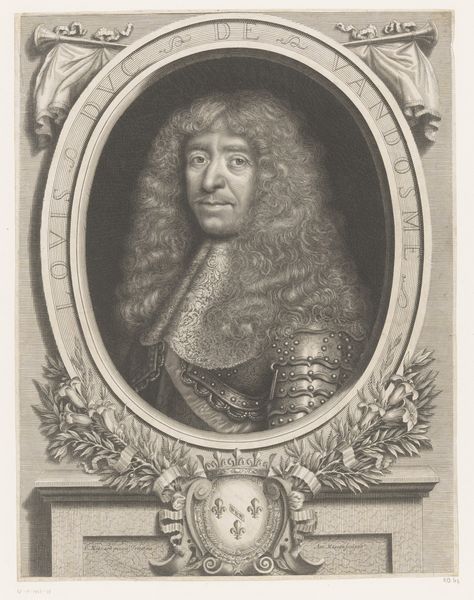
engraving
#
portrait
#
baroque
#
line
#
history-painting
#
academic-art
#
engraving
Dimensions: height 440 mm, width 326 mm
Copyright: Rijks Museum: Open Domain
Editor: This is a portrait of Louis XIV, dating sometime between 1636 and 1696, by Nicolas de Poilly. It's an engraving currently held at the Rijksmuseum. It’s hard to ignore the sheer pomp of the image; what stands out to you? Curator: The immediate visual language speaks volumes, doesn't it? But I’m interested in interrogating how power and representation intersect in this portrait. How does the Baroque style, the use of line, contribute to the construction of Louis XIV’s identity, and what are the implications of that construction for his subjects? Editor: So, you are asking about power? Curator: Precisely! We need to ask questions about the gaze—whose gaze is privileged here? How does this image reinforce the patriarchal structure of the time, and how might it have been received by women or marginalized communities? The fleur-de-lis are visual clues and part of the complex system of signs that solidified the French monarchy’s divine right to rule. Consider, too, the engraving as a medium; how does its reproducibility affect the dissemination and reception of this image of power? Editor: That's a really interesting perspective; I hadn’t thought about the implications of reproducibility. It made this image much more accessible, for propaganda? Curator: It raises important questions, doesn’t it? This image, while seemingly straightforward in its depiction of royalty, actually holds layers of social, historical, and political significance. By examining it through the lenses of gender, class, and power, we can start to unravel some of the complex dynamics at play in 17th-century France. What did you take away from this conversation? Editor: I'm much more aware of how much context and intentionality are involved in the creation and interpretation of this portrait. The artwork seems less objective and much more about the relationship between the powerful and the powerless.
Comments
No comments
Be the first to comment and join the conversation on the ultimate creative platform.

